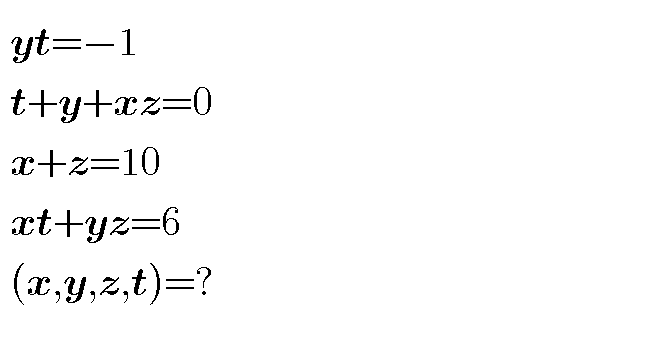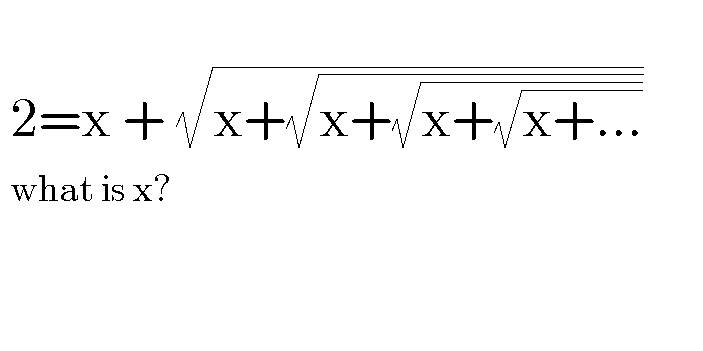
AlgebraQuestion and Answers: Page 336
Question Number 36110 Answers: 0 Comments: 0
Question Number 36019 Answers: 3 Comments: 0
Question Number 35892 Answers: 2 Comments: 2

Question Number 35768 Answers: 0 Comments: 0

Question Number 35723 Answers: 1 Comments: 0
Question Number 35626 Answers: 0 Comments: 0
Question Number 35622 Answers: 0 Comments: 0
Question Number 35481 Answers: 1 Comments: 1
Question Number 35475 Answers: 1 Comments: 0
Question Number 35345 Answers: 0 Comments: 0
Question Number 35338 Answers: 0 Comments: 1
Question Number 35336 Answers: 2 Comments: 1
$$\sqrt{\mathrm{2}{x}^{\mathrm{2}} }+\mathrm{7}{x}+\mathrm{5}\sqrt{\mathrm{2}}=\mathrm{0} \\ $$
Question Number 35291 Answers: 1 Comments: 1
Question Number 35256 Answers: 1 Comments: 1
$$\mathrm{Factorize}\::\mathrm{x}^{\mathrm{5}} −\mathrm{y}^{\mathrm{5}} \\ $$
Question Number 35153 Answers: 1 Comments: 0

Question Number 35152 Answers: 0 Comments: 2

Question Number 35080 Answers: 2 Comments: 0
Question Number 35056 Answers: 0 Comments: 2
Question Number 34870 Answers: 3 Comments: 4

Question Number 34760 Answers: 2 Comments: 0

Question Number 34739 Answers: 3 Comments: 3

Question Number 34738 Answers: 0 Comments: 2

Question Number 34686 Answers: 0 Comments: 0
Question Number 34685 Answers: 0 Comments: 0
Question Number 34680 Answers: 0 Comments: 0
Question Number 34673 Answers: 0 Comments: 0
Pg 331 Pg 332 Pg 333 Pg 334 Pg 335 Pg 336 Pg 337 Pg 338 Pg 339 Pg 340
